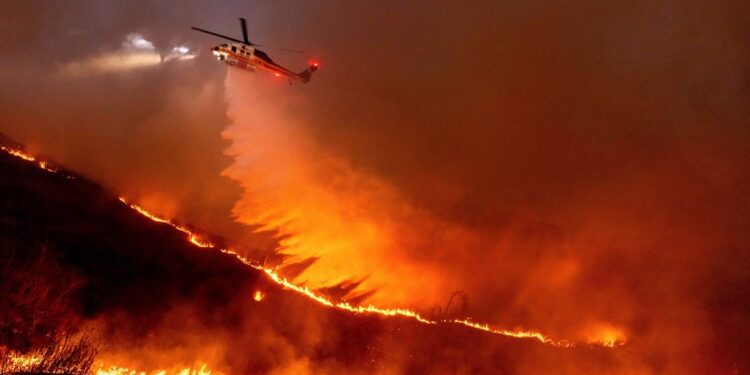Wildfires are becoming increasingly destructive worldwide, with scientists warning that rising temperatures, prolonged droughts, and expanding human settlement in fire-prone regions are creating conditions where blazes are harder – and sometimes impossible – to contain. The financial, environmental, and human costs are mounting sharply.
Rising human and economic toll
According to international data, wildfire seasons are now longer and more intense than ever recorded. Fatalities linked to wildfires have risen significantly in the past decade, while the global economic cost has climbed into the hundreds of billions of dollars annually. Property damage, insurance payouts, and infrastructure losses have left governments struggling to allocate resources for recovery and prevention.
Climate change as a driving force
Experts point to climate change as the principal factor fuelling the surge in fire activity. Hotter, drier conditions create the perfect environment for fires to spread rapidly, while erratic wind patterns make containment more unpredictable. Researchers caution that even advanced firefighting technology cannot fully mitigate the impact when natural conditions are so heavily stacked in favour of fire.
Regions under particular strain
The Mediterranean, North America, and parts of Australia have seen some of the deadliest wildfires in recent years. In Southern Europe, fire-prone landscapes combined with persistent drought have forced repeated mass evacuations. In the United States, record-breaking fires in California and Hawaii have destroyed entire communities, while Canadian wildfires have sent smoke plumes across the Atlantic.
Economic and policy implications
The spiralling costs are reshaping national policies and insurance markets. In many regions, insurers are withdrawing from high-risk areas, leaving governments to absorb more of the financial burden. At the same time, experts argue that prevention – through controlled burns, forest management, and stronger building codes – must become a priority. Yet implementation is slow, and political consensus often lags behind the urgency of the crisis.
A warning for the future
Scientists warn that if emissions are not curbed and adaptation measures accelerated, wildfires could become effectively unstoppable in many regions by mid-century. For communities already living under the constant threat of fire, the challenge is no longer whether wildfires will strike, but how often, how severe, and at what cost.
Newshub Editorial in Global – 3 October 2025



Recent Comments